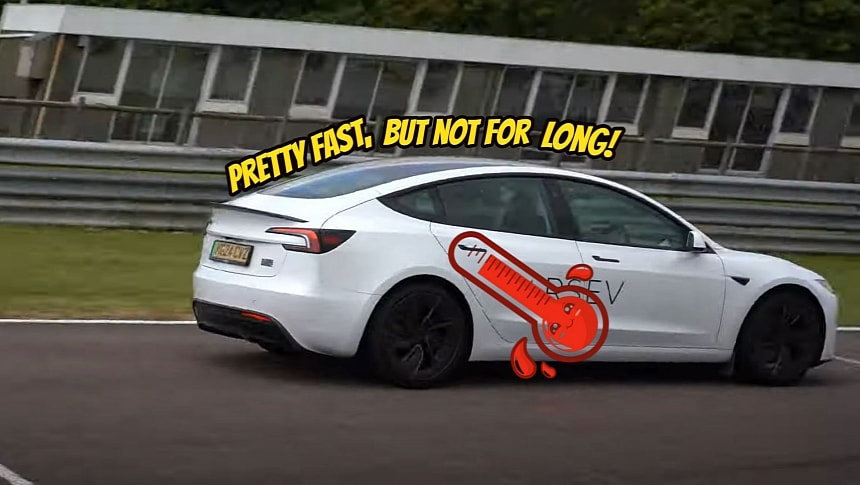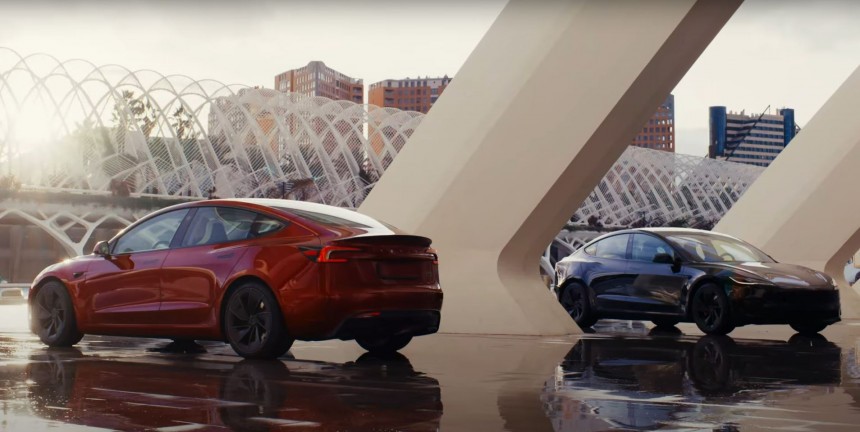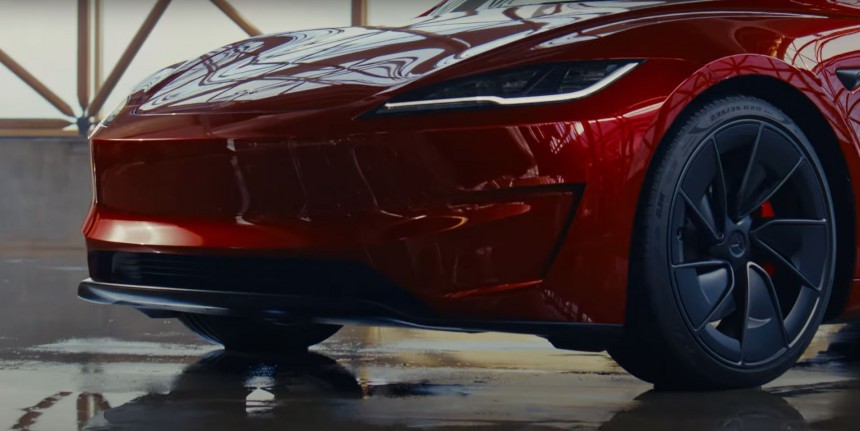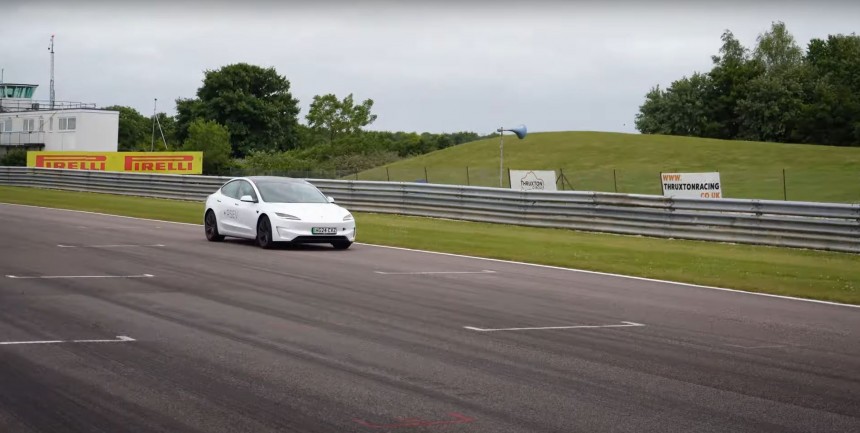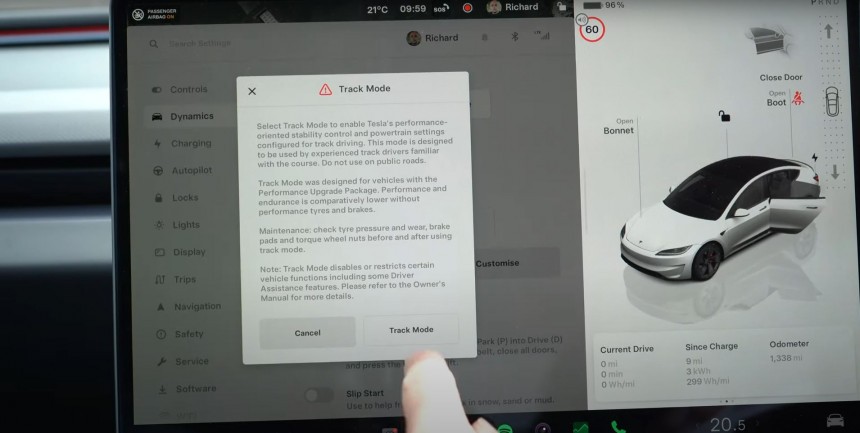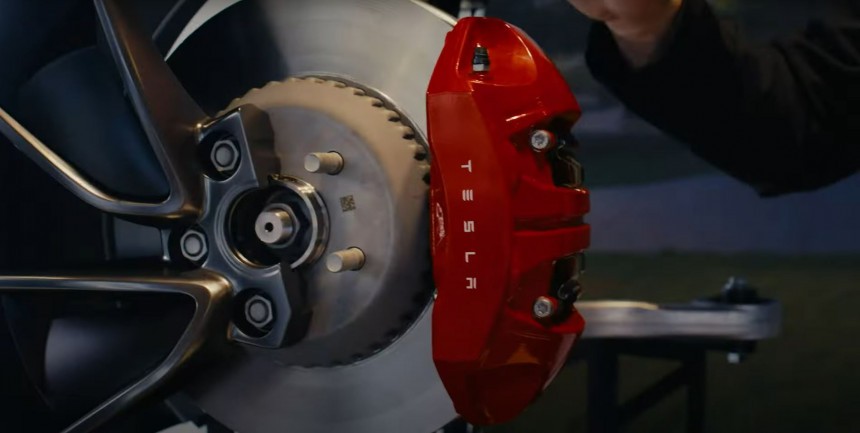Tesla's new Model 3 Performance can be the ultimate family car for people who need one ride to do it all with minimum costs, except going off-road. Unfortunately, it isn't the track weapon some would have you believe. No matter the host of upgrades, it seems that the high-performance version of the sedan can't become a problem for the BMW M3, a somewhat similarly shaped sedan with completely different underpinnings and internals.
Still, many Tesla fans can't help themselves and compare the Highland refresh with the Bavarian model, even though the automaker has not put out an i3 yet (apart from the one that exists in China). But I guess, that's what happens when Audi and Mercedes-Benz drop the ball. Internal combustion engine-powered high-performance sports cars get compared to battery-powered ones that aspire to be just as dynamic.
But let's see what's what before deciding that the Model 3 Performance is a failure and not worthy of your hard-earned money.
A seasoned Tesla owner (who also happens to resell these EVs and more) ordered a UK-spec Model 3 Performance that comes with the steering wheel on the (wrong?) right-hand side. The vehicle arrived after a few weeks, and he went to pick it up at the port, where the marque had set up shop.
He took it on a couple of road trips with the family and discovered that the sporty version of the Model 3 still retained the updates introduced with the Highland refresh. It was comfy, it didn't allow too much noise to protrude into the cabin, it had plenty of power on tap, but it was also rather efficient. So, in theory, anyone could do with a Model 3 Performance. It does not have a compromised, stiff ride or a range that could be a dealbreaker.
But he wanted to see if the facelifted EV could rise to the occasion on the track. So, he chose Thruxton Race Circuit to test the sedan.
In the US, a grey-over-black Model 3 Performance costs $54,990. That's only $10 below the federal EV tax credit price tag limit, which means qualifying buyers can get the quickest Model 3 for a pre-tax and -fee cost of $47,490. Any exterior color, upholstery, or software change takes the vehicle over the $55,000 barrier, making it ineligible for the federal perk.
The dual-motor powertrain and the high-voltage 78.1-kWh made-in-Nevada Panasonic battery built on the 400V architecture enable the zero-tailpipe emission ride to reach 60 mph (97 kph) from a standstill in 2.9 seconds. It'll keep accelerating until it reaches a top speed of 163 mph (262 kph). That's what 510 hp (380 kW) and 547 lb-ft (741 Nm) of torque will do for you.
The maximum EPA-rated range is also pretty good – 303 miles (488 kilometers). Keep in mind that the vehicle rides on 20-inch wheels with a staggered setup. The rubber rings wrapped around the rims put on the rear axle are slightly wider.
In Canada, Australia, and countries on the right side of the pond, the Model 3 Performance is different. In Europe, for example, it's also (much) more expensive. In Ireland, it costs €55,890 ($60,588), while in Germany and Poland, it'll set customers back €56,990 ($61,780) and €57,116 ($61,917), respectively. Of course, that's before any incentives that might exist.
Sadly for them, the sedan is equipped with the China-sourced LG Energy 79-kWh high-voltage energy storage unit. That pack is not as good as the Panasonic battery, which means the non-US Model 3 Performance puts out approximately 460 hp (343 kW) and 533 lb-ft of torque (723 Nm).
Interestingly enough, Tesla says that the Chinese-made Model 3 Performance units bound for the European Union and the UK can reach 62 mph (100 kph) in 3.1 seconds and achieve the same top speed of 163 mph. The range is even better! It can cover 328 mi (528 km) on a single charge, but that's because the Worldwide harmonized Light vehicles Test Procedure (WLTP) is more permissive than the EPA testing cycle.
The man started hooning it around the track with no sharp corners or obvious straight lines and discovered that the handling had improved, the braking power was better than on the last generation, the seats held him better, the dampers did a very good job, and the sedan was actually quite capable of providing the person behind the steering wheel with a fun time. The man even reached 133 mph (214 kph) with someone sitting in the passenger's seat.
Do note that he drove the previous generation on the same track. So, he knows what's what. He's not just a random influencer looking for clout on social media.
The only difference between the two EVs, besides the obvious upgrades? The tires. The new one was equipped with Pirelli P Zero rubber rings, while the old Model 3 made good use of Michelin Pilot Sport 4S tires.
After a few more not-as-exciting laps and two breaks, the EV's computer showed that it consumed 49 percent of the battery to cover approximately 30 miles (48 kilometers). High-speed driving will empty the high-voltage energy storage unit rather fast, just like an internal combustion engine would feast on gas when put to intense work.
They continued to drive it on the track despite the low state of charge and noticed that power was being reduced while the battery temperature was climbing up. However, it's important to underline that after leaving the track, the energy storage unit's temperature gradually came down.
The driver and the passenger suspected that the battery couldn't operate at its maximum capacity when the temperature went over 60 C (140 F), despite the fact that the normal operating temperature was around 55 C (131 F). There's not much of a range to play with there. If it's not at the right temperature, it's not working at its best.
That's not a good sign. It only shows that Tesla didn't take proper care of the cooling system, which is paramount for sustained high-performance driving. Degradation wasn't a worry because the EV had a little over 1,300 miles (2,092 kilometers) on the clock and was never tracked beforehand.
The automaker verified the data points remotely and confirmed that the EV performed within parameters and exactly how it was designed. The technicians also confirmed that there was an intentional power output limitation because the battery temporarily overheated to over 60 C. They sent the data to the engineering team, but it's unlikely that an over-the-air software update will fix what is obviously a hardware issue.
Tesla might want to bring forward a Tesla Model 3 Ludicrous that sports the right badge. It doesn't have to be a tri-motor because that would surely eat into Model S Plaid sales. But a slightly more expensive Model 3 with better cooling, better brakes, and the Panasonic battery could become a worry for the BMW M3 Competition xDrive or the upcoming M-ified i3.
For now, however, it is not. The EV is just a fun, slightly quicker commuting appliance. And there's nothing wrong with that. Just don't expect your new Model 3 Performance to be very good on the track, and you'll be happy with it.
But let's see what's what before deciding that the Model 3 Performance is a failure and not worthy of your hard-earned money.
A seasoned Tesla owner (who also happens to resell these EVs and more) ordered a UK-spec Model 3 Performance that comes with the steering wheel on the (wrong?) right-hand side. The vehicle arrived after a few weeks, and he went to pick it up at the port, where the marque had set up shop.
He took it on a couple of road trips with the family and discovered that the sporty version of the Model 3 still retained the updates introduced with the Highland refresh. It was comfy, it didn't allow too much noise to protrude into the cabin, it had plenty of power on tap, but it was also rather efficient. So, in theory, anyone could do with a Model 3 Performance. It does not have a compromised, stiff ride or a range that could be a dealbreaker.
Know before you go
However, here's a few details you must know. You shouldn't make up your mind before knowing these facts.In the US, a grey-over-black Model 3 Performance costs $54,990. That's only $10 below the federal EV tax credit price tag limit, which means qualifying buyers can get the quickest Model 3 for a pre-tax and -fee cost of $47,490. Any exterior color, upholstery, or software change takes the vehicle over the $55,000 barrier, making it ineligible for the federal perk.
The dual-motor powertrain and the high-voltage 78.1-kWh made-in-Nevada Panasonic battery built on the 400V architecture enable the zero-tailpipe emission ride to reach 60 mph (97 kph) from a standstill in 2.9 seconds. It'll keep accelerating until it reaches a top speed of 163 mph (262 kph). That's what 510 hp (380 kW) and 547 lb-ft (741 Nm) of torque will do for you.
The maximum EPA-rated range is also pretty good – 303 miles (488 kilometers). Keep in mind that the vehicle rides on 20-inch wheels with a staggered setup. The rubber rings wrapped around the rims put on the rear axle are slightly wider.
Sadly for them, the sedan is equipped with the China-sourced LG Energy 79-kWh high-voltage energy storage unit. That pack is not as good as the Panasonic battery, which means the non-US Model 3 Performance puts out approximately 460 hp (343 kW) and 533 lb-ft of torque (723 Nm).
Interestingly enough, Tesla says that the Chinese-made Model 3 Performance units bound for the European Union and the UK can reach 62 mph (100 kph) in 3.1 seconds and achieve the same top speed of 163 mph. The range is even better! It can cover 328 mi (528 km) on a single charge, but that's because the Worldwide harmonized Light vehicles Test Procedure (WLTP) is more permissive than the EPA testing cycle.
Back on track
Now, back to the track session with the Euro-spec Model 3 Performance. The fun started with a 96 percent state of charge, which is more than enough to give the systems full confidence that maximum power output can be deployed. When the battery is at a lower state of charge (usually sub-30 percent), any EV will subtly limit the motors' capabilities. This becomes obvious when the battery is near depletion and turtle mode is activated, which severely limits the acceleration.Do note that he drove the previous generation on the same track. So, he knows what's what. He's not just a random influencer looking for clout on social media.
The only difference between the two EVs, besides the obvious upgrades? The tires. The new one was equipped with Pirelli P Zero rubber rings, while the old Model 3 made good use of Michelin Pilot Sport 4S tires.
It's getting hot in here!
Unfortunately, after a couple of laps, the refreshed Model 3 Performance, which does come with a dedicated Track Mode, started behaving weirdly. It started flashing warnings about the increased battery temperature at around 84 percent state of charge. Then, the EV limited the power output at around 65 percent state of charge, which most likely happened because both the battery and the motors were running at very high temperatures. It also notified the driver that braking performance was reduced.They continued to drive it on the track despite the low state of charge and noticed that power was being reduced while the battery temperature was climbing up. However, it's important to underline that after leaving the track, the energy storage unit's temperature gradually came down.
The driver and the passenger suspected that the battery couldn't operate at its maximum capacity when the temperature went over 60 C (140 F), despite the fact that the normal operating temperature was around 55 C (131 F). There's not much of a range to play with there. If it's not at the right temperature, it's not working at its best.
That's not a good sign. It only shows that Tesla didn't take proper care of the cooling system, which is paramount for sustained high-performance driving. Degradation wasn't a worry because the EV had a little over 1,300 miles (2,092 kilometers) on the clock and was never tracked beforehand.
Don't worry! It's working as it should
This test also shows that the battery doesn't allow for much high-performance fun. At the same time, it proved that the stock braking system isn't ideal. If you want to track this EV more often, you will need better calipers (and maybe even discs).The automaker verified the data points remotely and confirmed that the EV performed within parameters and exactly how it was designed. The technicians also confirmed that there was an intentional power output limitation because the battery temporarily overheated to over 60 C. They sent the data to the engineering team, but it's unlikely that an over-the-air software update will fix what is obviously a hardware issue.
Tesla might want to bring forward a Tesla Model 3 Ludicrous that sports the right badge. It doesn't have to be a tri-motor because that would surely eat into Model S Plaid sales. But a slightly more expensive Model 3 with better cooling, better brakes, and the Panasonic battery could become a worry for the BMW M3 Competition xDrive or the upcoming M-ified i3.
For now, however, it is not. The EV is just a fun, slightly quicker commuting appliance. And there's nothing wrong with that. Just don't expect your new Model 3 Performance to be very good on the track, and you'll be happy with it.
